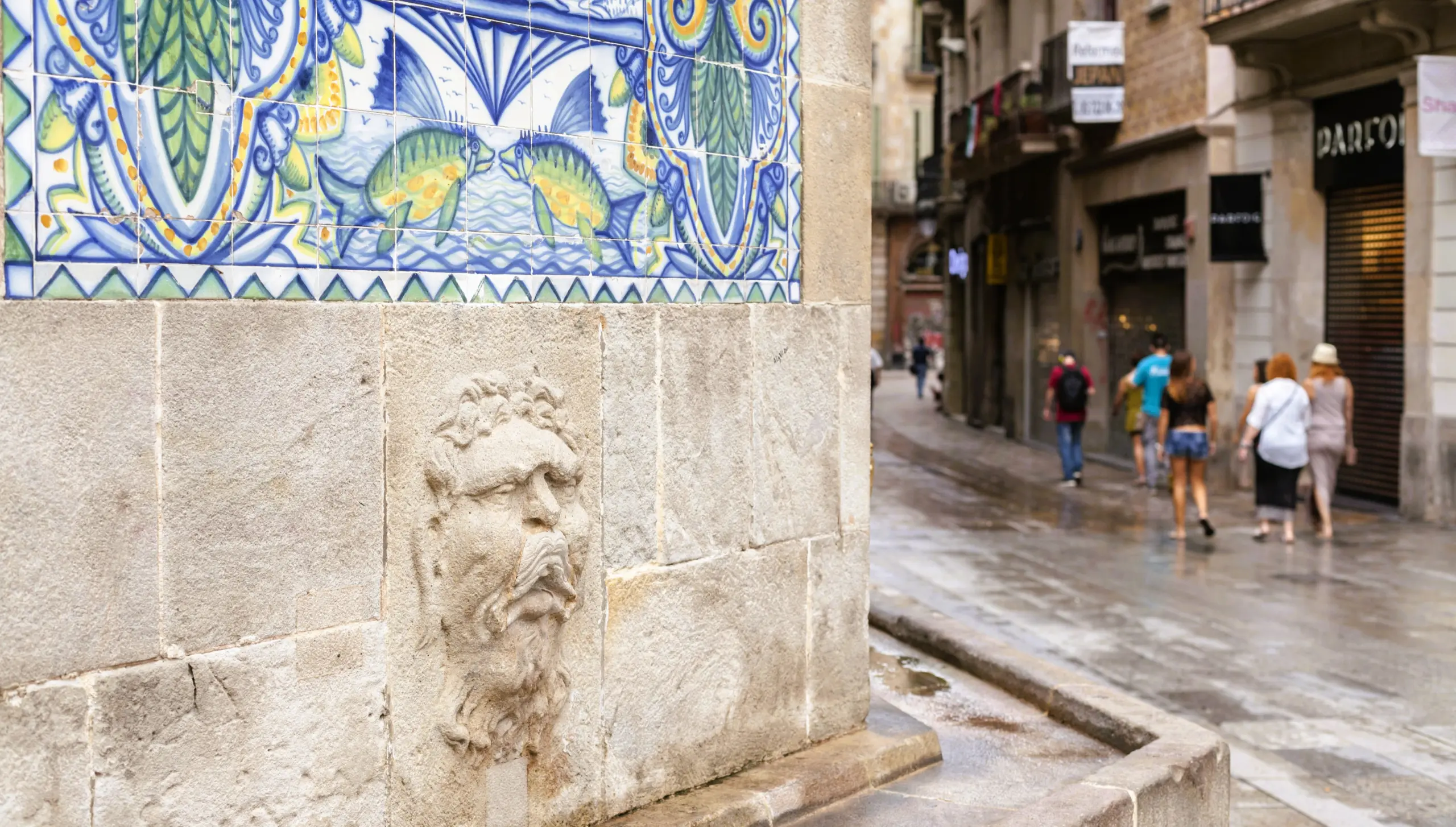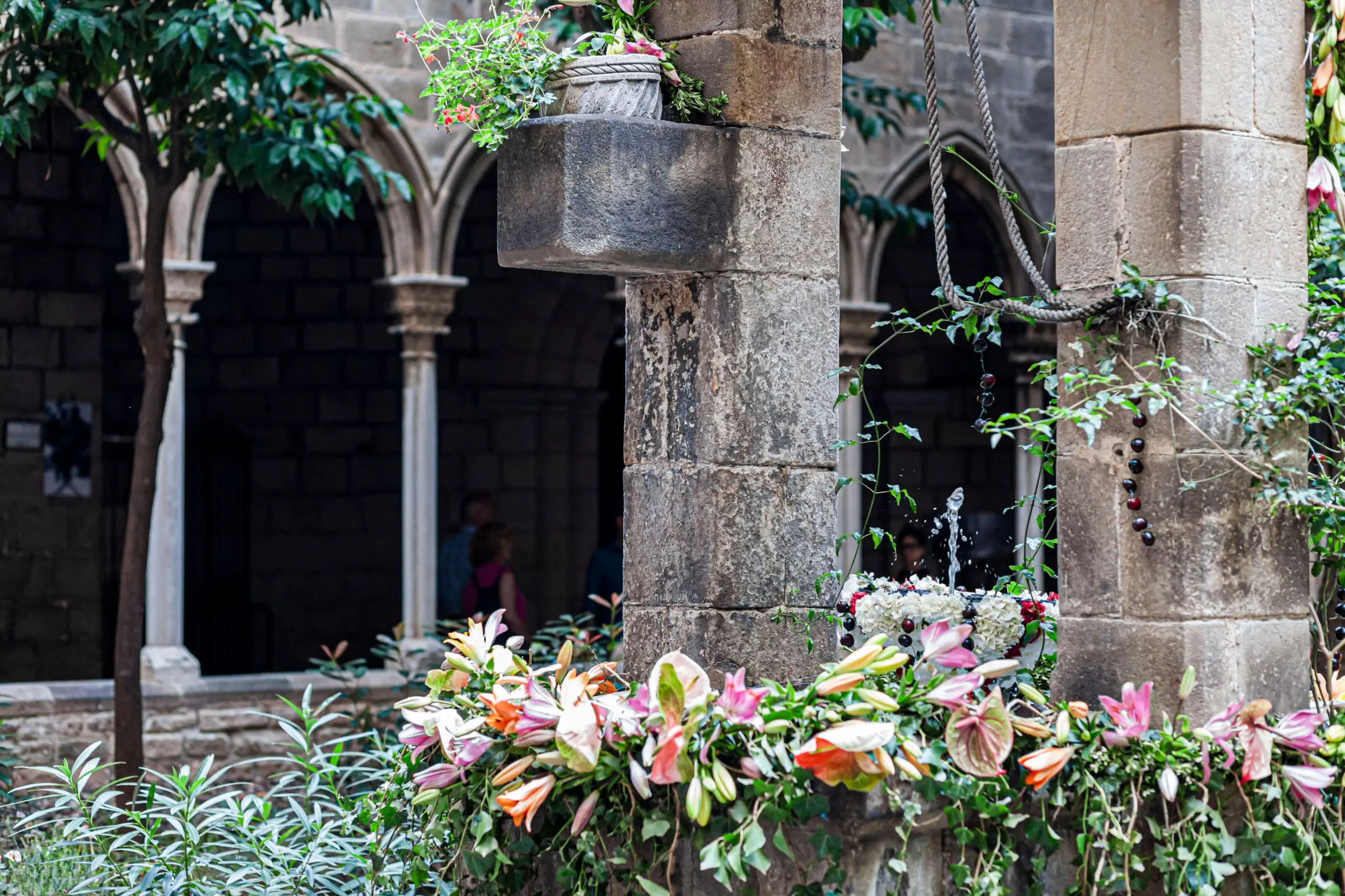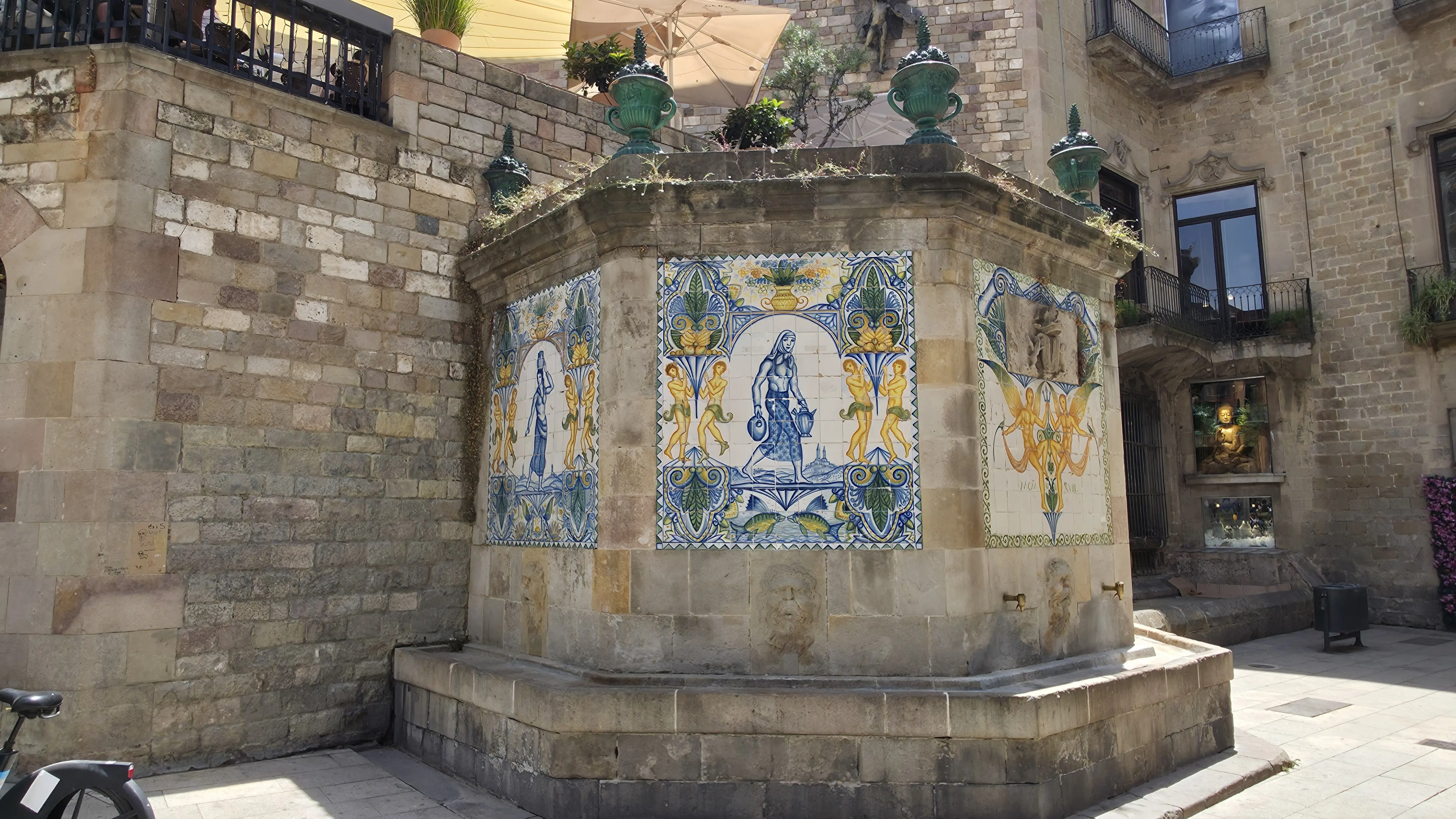Hola, dear readers! Barcelona is a city of energy, wide boulevards, buzzing plazas, and lively streets. But hidden among the chaos, you sometimes stumble upon places that feel like they belong to another time. One such discovery is the Font de Santa Anna, a medieval fountain tucked away just steps from Plaça de Catalunya, the city’s busiest square.
The contrast couldn’t be sharper: one moment, you’re dodging traffic and weaving through crowds; the next, you’re in a peaceful corner where water trickles softly, leaves rustle in the breeze, and locals rest on benches as if the world outside has slowed. When I first found it, I couldn’t believe that such calm could exist right beside the whirlwind of the city center. It’s one of those places that proves Barcelona’s greatest treasures aren’t always the grandest, but sometimes the quietest.
A Glimpse into History
The Font de Santa Anna dates back to around 1356, making it one of Barcelona’s oldest surviving public fountains. Built during the Gothic era, it originally served a practical purpose: supplying fresh water to the residents of the city when fountains were essential for daily life.
Its location near the Church of Santa Anna, itself a Romanesque-Gothic blend, made it more than just a utility. The fountain became part of the fabric of community life, a gathering point where people met, filled their jugs, and shared news. Over the centuries, it has been restored but never lost its medieval character. Standing here, you’re not just looking at a fountain, you’re seeing a piece of Barcelona’s history that has been flowing for nearly seven centuries, quietly reminding us of the city’s Gothic roots.
What to See
At first glance, the fountain might seem modest, but its history and setting give it significance:
- Medieval Origins: Dating from 1356, this is Barcelona’s oldest fountain, originally serving as a stone trough for watering animals before a fountain was added in 1375 to supply drinking water.
- Restored Character: The fountain has been renovated over the centuries, notably in 1918 when colorful ceramic tiles were added by artist Josep Aragay, blending its medieval heritage with later artistic touches.
- A Quiet Corner: The area around Carrer de Santa Anna offers a respite from the busy commercial streets nearby. While not a large plaza, it provides a moment of calm where you can appreciate this historic monument just steps from the bustle of Plaça de Catalunya.

And just next door, the Church of Santa Anna awaits. Its elegant Gothic cloister encloses a quiet, secluded garden with a fountain one of the most peaceful spots in the city center and an ideal complement to discovering the historic fountain.

The Atmosphere Through My Eyes
What makes the Font de Santa Anna so memorable isn’t just its history but its contrast. Step away from Plaça de Catalunya, with its honking buses, rushing crowds, and department store lights, and within minutes you’re in another world. The narrow street of Carrer de Santa Anna feels like a step back in time, offering a quieter atmosphere where you can pause to appreciate this medieval monument.
For me, this is the Barcelona I love most: not only the grand sights but the quiet discoveries that reveal layers of history. Standing before this ancient fountain, just steps from the modern city’s chaos, you feel connected to the Barcelona of another era, a reminder that the city’s soul lives not just in its famous landmarks, but in these humble, enduring corners that continue to tell their stories.

Tips for Visiting
- How to Find It: The Font de Santa Anna is located at Carrer de la Cucurulla, 6, near the corner with Portal de l’Àngel avenue, just steps from Plaça de Catalunya. Look for the entrance to Santa Anna Church, and you’ll find the fountain in its small square.
- Best Time to Go: Morning for calm and quiet, or late afternoon when the light softens and the square feels more atmospheric.
- Pair It With: Step into the nearby Church of Santa Anna and its cloister, a serene oasis that pairs perfectly with the fountain’s medieval charm.
- Good to Know: The fountain is officially protected as a Bé Cultural d’Interès Local, ensuring this 14th-century monument will continue to be preserved for future generations.
- Photography Tip: Frame the Gothic fountain against the backdrop of Portal de l’Àngel’s modern bustle, a striking way to capture Barcelona’s layered history.
Final Thoughts
The Font de Santa Anna may not be on every tourist’s checklist, but that’s exactly why it’s so special. It’s a reminder that Barcelona’s magic isn’t only in Gaudí’s masterpieces or the Gothic spires, it’s also in the quiet corners, the hidden fountains, and the places where history and daily life quietly overlap.
My advice? Next time you’re near Plaça de Catalunya, don’t just keep moving with the crowds. Take a small detour. Sit by the fountain, listen to the trickle of water, and let yourself pause. It’s in these small, unexpected moments that travel becomes unforgettable.
Have you ever discovered a hidden corner of a city that felt like a secret just for you? Share your stories in the comments, I’d love to hear them!
xoxo,
Bubbly 🎈

